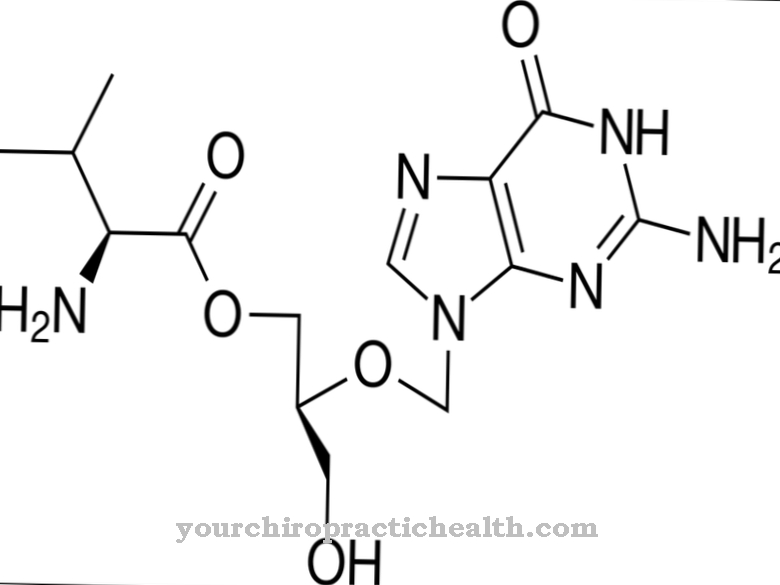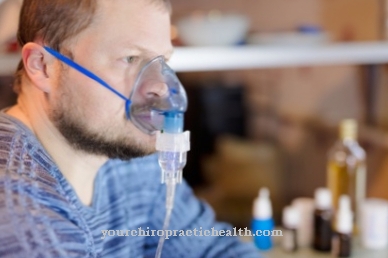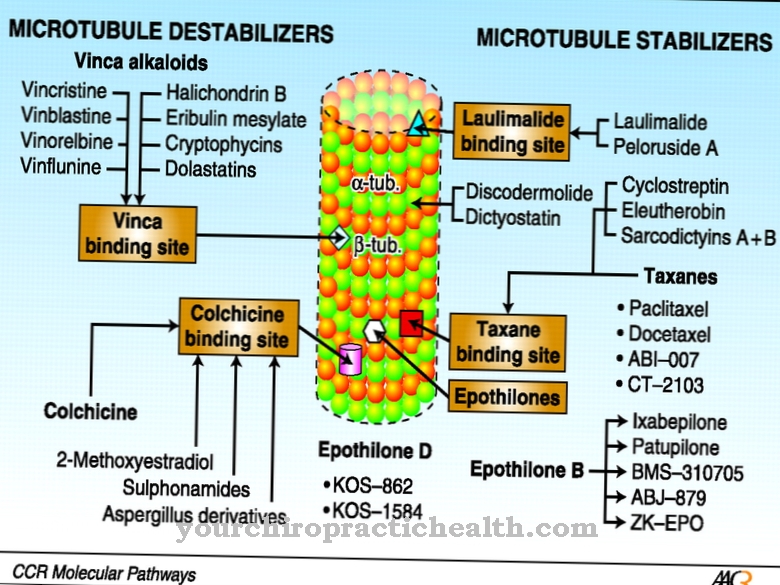Trazodone is the name of a drug that is used to treat depression. In addition, the remedy has a calming effect.
What is trazodone?

Trazodone belongs to the group of psychotropic drugs. The drug is used as an antidepressant and sedative.
The active ingredient was developed in Italy in 1966 by Angelini Research Laboratories. It was not until 1981 that the drug was approved for the first time. Then trazodone came onto the American market. From 1985 onwards it was also distributed in Europe. After the expiry of patent protection, numerous inexpensive generics were also approved.
Trazodone is administered orally in the form of film-coated tablets or prolonged-release tablets.
Pharmacological effect
Trazodone is one of the antidepressants. That means it can be used to treat depression. In the case of depression, those affected suffer from mood disorders and a lack of drive.
Within the brain, communication between neurons (nerve cells) takes place through so-called neurotransmitters. These messenger substances are released by the cells and bind to special docking points called receptors. If the messenger substance reaches the appropriate receptor, this leads to a signal transmission. To end the signals, the neurotransmitter returns to its original cell.
If there is an excess or deficiency of messenger substances in the brain, this often results in organic diseases. A deficiency in the neurotransmitter serotonin can cause depression, since serotonin is also considered a happiness hormone. An excess of this messenger substance in turn leads to schizophrenia or delusions. Trazodone has the ability to inhibit the reuptake of serotonin. For this reason, it is also called "serotonin reuptake inhibitor".The antidepressant ensures that the serotonin can remain between the neurons for a longer period of time and has a longer duration of action. A serotonin deficiency can be compensated for.
Another property of trazodone is the inhibition of serotonin receptors (5HT2 receptors). The excessive activation of the serotonin receptors is said to trigger anxiety, sexual distress, restlessness and sleep problems. Because of this double effect, trazodone is also one of the dual serotonergic antidepressants. Trazodone also has effects that promote sex drive. The ingestion of the substance causes an increase in erectile function and libido.
The drug is absorbed quickly in the intestine. After just 30 to 60 minutes, trazodone reaches its maximum level in the blood. After the antidepressant has been broken down, it leaves the body via the kidneys and urine.
Medical application & use
Trazodone is used to treat depressive illnesses. In addition to depression, this can include post-traumatic stress disorder (PTSD), panic attacks, borderline syndrome or obsessive-compulsive disorder. By using it, it is possible to suppress or at least weaken depressive phases.
Trazodone is taken through tablets. When using them, care should be taken to slowly increase the dose. The starting dose is usually 100 milligrams of trazodone per day. After a week, the daily dose can be increased by 100 grams. The maximum dose is reached with 400 milligrams. The drug can be administered either once a day or in several sections. The intake of trazodone takes place after eating. While the calming effect of trazodone can be felt immediately, the mood-enhancing effects must be waited for up to three weeks. To bring trazodone therapy to an end, it is recommended that the dose be gradually reduced.
You can find your medication here
➔ Medicines against depressive moods & to lighten the moodRisks & side effects
The use of trazodone is sometimes associated with undesirable side effects, but these do not occur in every patient. Most commonly, people suffer from dizziness, restlessness, a drop in blood pressure, headache, sleep problems, fatigue, irregular heartbeat, dry mouth, nausea, vomiting and diarrhea. It can also cause rashes on the skin, blurred vision, tremors, constipation, increased blood pressure, and weight gain or loss.
If therapy with trazodone is ended abruptly, there is also a risk of unpleasant effects. These can include insomnia, nausea, vomiting, sweating, and restlessness. That is why the doctor always ends the treatment with a continuous decrease in the dose.
Contraindications for treatment with trazodone are hypersensitivity to the drug and acute poisoning with sleeping pills, painkillers or alcohol. Furthermore, the patient should not have cardiac arrhythmias, liver disease or thoughts of suicide.
During pregnancy, strict medical considerations must be made for the use of trazodone, especially in the first three months of pregnancy. In this way, possible risks for the child cannot be completely ruled out. Because trazodone can get into breast milk, the agent must not be used at all during breastfeeding. The use of the antidepressant is not suitable for children and adolescents under 18 years of age.
Interactions can also occur when taking trazodone. The agent has an intensifying effect on drugs that dampen brain function. We also advise against the simultaneous intake of MAO inhibitors or other antidepressants derived from the selective serotonin reuptake inhibitors. There is therefore a risk of pronounced side effects. An increased trazodone level in the blood can result from the simultaneous use of active substances such as fluoexetine, haloperidol and thioridazine. Therefore, these agents should not be administered at the same time.



























